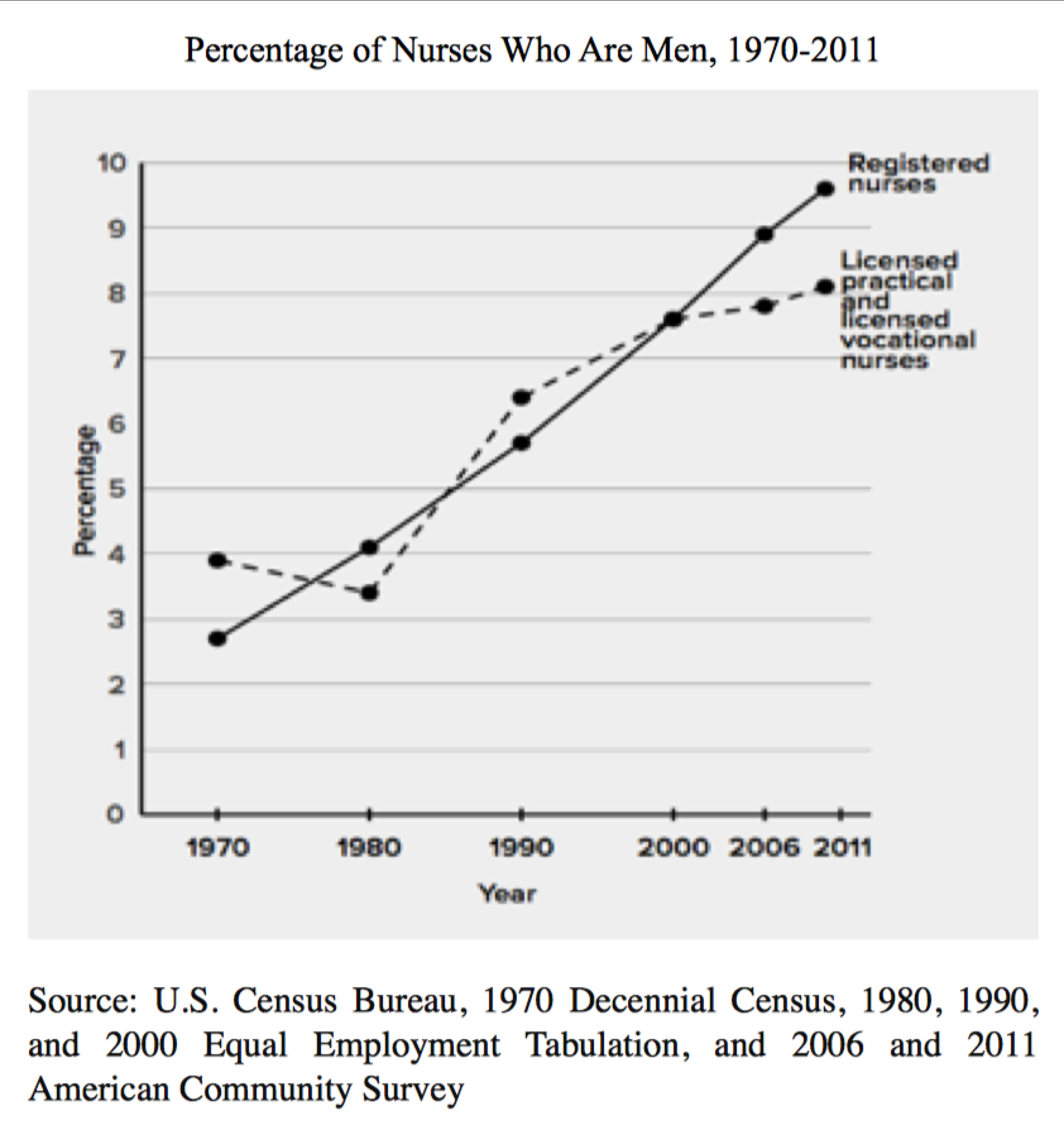Questions 1-11 are based on the following
passage.
Healthy Outlook for Male Nurses
The presence of men in the nursing field has a long history reaching back over two thousand years. Men attended the world’s first nursing school in India in 250 Q1 BCE founded a hospital to provide care for the sick during the Black Plague epidemic and cared for wounded soldiers in countless wars throughout history. Yet despite the historical role of men in nursing, men currently comprise less than 10 percent of the nursing population in the United States. While the reasons behind the dearth of men in nursing Q2 are numerous, a current rise in the number of men in the nursing field bodes well for nurses and patients alike. Although men played a prominent role in the nursing field for millennia, shifting gender norms in the late 1800s caused a dramatic drop in the number of men pursuing nursing as a career. Part of this trend was related to the rise of the family medical model in Victorian England. Q3 According to this model, the ideal medical team mirrored the patriarchal Victorian family unit, with men (doctors) as the heads of households, women (nurses) as the “handmaidens,” and children (patients) as the dependents. This model dissuaded men from entering the nursing profession, directing them instead to the more socially acceptable role as physicians. In addition to the influence of the family medical model, the teachings of Florence Nightingale—often hailed as the founder of the modern nursing Q4 profession, further discouraged men from entering the nursing field. While Nightingale was successful in Q5 inflating the status of nursing as a respectable profession for women, her axiom that nursing was the ideal profession for women created social and professional barriers for men interested in pursuing Q6 nursing jobs as a professional career path for themselves. For example, in the early 20th century, many nursing registries created separate lists for men and women, legally preventing men from practicing in areas such as maternal/child health, obstetrics, and gynecology. Q7 The tide against men in the nursing field began to change directions in the 1970s and Q8 1980s. Due in part to a United States Supreme Court decision that held that the women-only admissions policy of the Mississippi University for Women violated the Equal Protection Clause of the Fourteenth Amendment. Since this decision, the percentage of registered nurses who are men in the United States has increased Q9 from 2.7 percent in 1970 to 7.6 percent in 2011. This growth is likely to prove beneficial for both the nursing community and the patients they serve. Q10 With the demand for nursing services projected to surge over the next decade, the time could not be better for the equitable inclusion of men into the nursing workforce. For patients, this will mean a larger and more diverse set of potential caretakers; and for the nurses themselves, this Q11 meant stable employment, relatively high wages, and a rewarding career.
